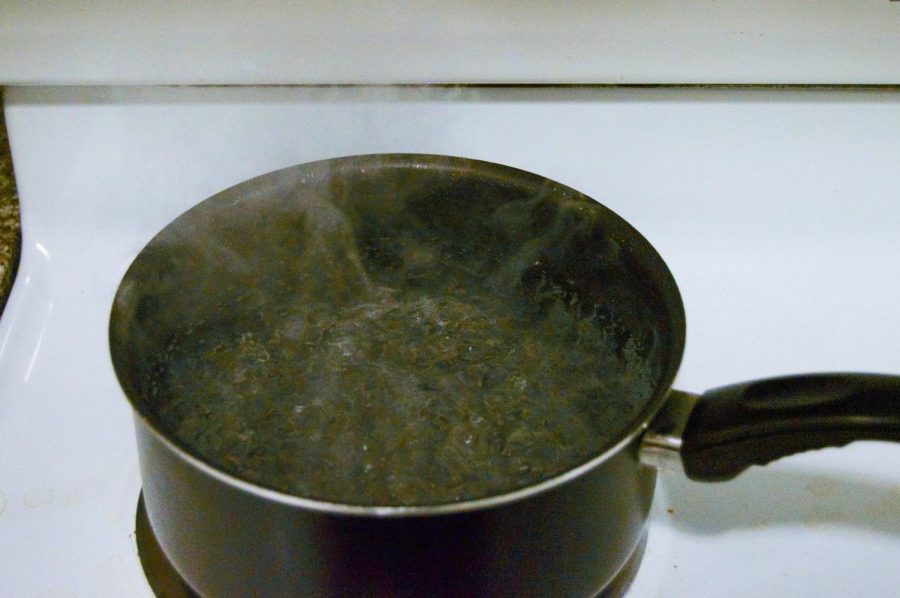Researchers find new method to boil water
May 17, 2016
Findings allow for quicker, more reliable process using polymers
Researchers at Oregon State University have boiled down research to discover a new method to create and control the bubbles made from boiling water.
A recently published study led by Oregon State University professor Chih-hung Chang has led to a new method of boiling water. This new method still requires water to be at boiling temperatures, but a specially made material placed on the bottom of the container will allow boiling to facilitate more quickly and reliably.
“We’ve been working on this research for about five years,” said professor of chemical engineering, Chih-hung Chang. “We create a surface that has two functionalities. We use ink jet printing to print a polymer dot on a substrate, and a nanostructure surface on top of that.”
The study was published in Scientific Reports earlier in April and is entitled, “Large-scale Generation of Patterned Bubble Arrays on Printed Bi-functional Boiling Surfaces.”
The polymer dot itself is hydrophobic, meaning that it has a tendency to repel water. The nanostructure surface, Chang explained, will allow water to flow through the tiny passages that make up its structure.
The nanostructure surface uses capillary force, which allows water to flow through these tiny passages, to supply water directly to the polymer dot. Boiling is achieved on these dots, and the combination of different forces allows a very structured formation of bubbles where the dots are placed.
“The boiling temperature will still be the same, but usually when you try to boil something from a surface, you need to heat the surface above the boiling temperature, typically more than 20 degrees Celsius,” Chang said. “By (using this technology) you reduce that extra temperature you need to bring your surface to boiling.”
Strategically using the polymer dots will allow a reduction of energy when trying to boil water, Chang explained.
“It is uncommon for heat transfer to occur with 100 percent efficiency,” said MBA student Robert Shattuck. “The primary benefit is a reduction in the size of the heat transfer surface area.”
Professor Chang’s research was the focus of Shattuck’s thesis for the MBA program, which allowed him to look at the research from a business standpoint.
“This technology has the potential to benefit any industry in which water is used as a heating or cooling medium or in which steam is generated,” Shattuck said. “Consider industrial and commercial manufacturing and process facilities or industrial and commercial laundry and linen supply companies.”
The applications of this technology are numerous, according to Shattuck, as countless industries require the boiling of a liquid medium—most commonly water.
“It will be important because the technology has the potential to reduce appliance size and maintenance costs involved in the process,” Shattuck said.
Apart from industrial boilers, this technology has the ability to facilitate the cooling of electronic devices, according to MS Michele David. David works as a graduate research assistant in Professor Chang’s group.
According to an OSU news release on the study, the work was supported by the OSU Venture Development Fund and the Scalable Nanomanufacturing Program of the National Science Foundation.
One of the drawbacks of electronics is that they tend to generate a lot of heat. This technology allows that heat to be efficiently dispersed into a liquid medium. Water cooling is a method of heat removal used in industrial settings and home computers alike.
“The process used to make the technology involves a relatively simple and low-cost operation,” David said.
Other published methods to facilitate boiling with enhanced surfaces use vacuums and high temperatures, according to David.
This method does not require such things, which keeps cost low. The process would allow for existing surfaces to simply be coated with the nanostructure and polymer dots, and raise heat transfer efficiency.











































































































